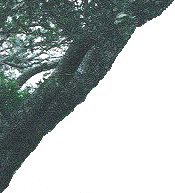Purchase indinavir no prescriptionRhythmic medications vs medicine discount 400 mg indinavir visa, moderate-voltage treatment kidney cancer generic indinavir 400mg mastercard, 3-Hz activity is current in the best central region and evolves to seizure activity symptoms you may be pregnant generic 400 mg indinavir fast delivery, which is excessive in voltage treatment bacterial vaginosis order generic indinavir canada, slower, and mixed with spike discharges. High-voltage, slow rhythmic exercise, mixed with occasional spikes, is present within the left central region and occurred in affiliation with the focal clonic activity of the face, arm, and leg on the right. Right central seizure discharges characterised by rhythmic slow activity with superimposed waves of quicker frequency. This is associated with a scientific seizure characterized by focal clonic activity of the left arm and leg. The patient skilled a right frontal lobe infarction with evolution to a porencephalic cyst in that region. Low-voltage, rhythmic, quick spikes come up in the proper temporal region and stay confined to that area all through the seizure. Electrical seizure exercise begins in the midline central area (Cz) and then shifts to the left central region (C3), with less involvement at Cz. The seizure is confined to the left temporal with a changing morphology of the waveforms. One electrical seizure that lasts approximately eighty sec is shown in eight contiguous samples. The seizure begins as lowvoltage rhythmic theta activity in the left central region. Low-voltage, rhythmic, monomorphic, gradual sharp waves on the left persist just about unchanged during the recorded seizure. An alpha seizure discharge arises abruptly from the proper temporal region, characterized by rhythmic sinusoidal exercise. A: A seizure discharge is present in the left temporal region characterized by sinusoidal 10- to 11-Hz rhythmic activity that evolved from rhythmic sharp-wave exercise. Independent, semiperiodic slow-wave transients also are current within the left occipital region. A seizure discharge characterized by rhythmic 8-Hz sinusoidal activity evolves from rhythmic, slow, sharp-wave exercise within the left temporofrontal region. He was readmitted 2 weeks later with nonaccidental head trauma with computed to-mographydemonstrated diffuse and bilateral cerebral edema; focal parenchymal hemorrhages within the left temporal, parietal, and occipital lobes; and posterior fossa subarachnoid hemorrhage. High voltage generalized transients are related to myoclonic seizures characterized by temporary, axial movements involving the trunk and shoulders. There is increased activity within the electromyogram channel after the incidence of each generalized transient. A: Electrical seizure activity arises from the right central area and clinically is associated with a focal clonic seizure of the left arm. This is taken into account a "decoupling" of the scientific seizures from the electrical seizures. Outcome of neonates with electrographically recognized seizures, or susceptible to seizures. Long-term effects of standing epilepticus in the immature brain are specific for age and model. Positive rolandic sharp waves in the electroencephalograms of untimely neonates with intraventricular hemorrhage. Commission on Classification and Terminology of the International League against Epilepsy. Recurrent neonatal seizures: relationship of pathology to the electroencephalogram and cognition. Alobar holoprosencephaly (arhinencephaly) with median cleft lip and palate: Clinical, electroencephalographic and nosologic issues. Burst suppression electroencephalogram sample within the newborn: Predicting the outcome. The electroencephalogram of the premature toddler and full-term newborn: Normal and irregular development of waking and sleeping patterns. Sleep ontogenesis in early human prematurity from 24 to 27 weeks of conceptional age. Ontogenesis of mind bioelectrical activity and sleep organization in neonates and infants. Veille, sommeil, r�activit� sensorielle chez le pr�matur�, le nouveau-n� et le nourrisson. In Kellaway P, Petersen I, eds: Neurological and electroencephalographic correlative studies in infancy.
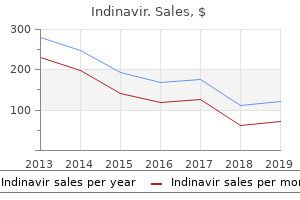
Buy 400mg indinavir mastercardSmall transfacial incisions that complement a bicoronal craniotomy incision are widely used6 and treatment for uti purchase 400mg indinavir with mastercard, increasingly medications 3605 buy indinavir mastercard, endoscopic and endoscopic-assisted approaches are being perfected for chosen instances symptoms 3 days past ovulation purchase 400mg indinavir overnight delivery, as reviewed by Har-El medicine holder purchase indinavir 400 mg without prescription. Compared with a era ago, improved native management and survival charges have been documented, and the incidence of extreme morbidity and mortality has been reduced to much decrease than 5%. Thus, a purely rhinal and sometimes endoscopic approach is most well-liked until this would significantly limit the extent of tumor resection or preclude sufficient repair of the anterior skull base. Identification of such limitations of a rhinal strategy requires familiarity with surgical anatomy, the pure history of neoplastic diseases of the area, and the efficacy of adjuvant therapies. Indications Although in depth bacterial or fungal infections of the anterior or lateral skull base occasionally require mixed transcranial and rhinal approaches, tumors much more incessantly require these combined approaches and are the focus of this evaluation. Tumors that will require anterior skull base resection include selected malignant tumors of the paranasal sinuses that reach superiorly via the cribriform plate, ethmoid roof, and planum sphenoidale or posteriorly by way of the posterior wall of the frontal sinus; benign and malignant meningiomas that involve the same areas; and chosen benign tumors or tumorlike lesions corresponding to orbital apex schwannomas, large nasal tumors such as juvenile angiofibromas and inverted papillomas, and occasional encephaloceles and mucoceles. The goals of anterior cranium base surgical procedure for tumors have remained fixed throughout the persevering with evolution of surgical and radiation oncology techniques. Segregation of intracranial contents from the contaminated paranasal sinuses, lowering the incidence of meningitis four. Improved aesthetic consequence Contraindications to aggressive surgical resection embrace tumor extension that precludes resection of tumor with unfavorable margins. Additional contraindications include distant metastatic disease unlikely to reply to chemotherapy and affected person medical fragility. Specific indications for craniotomy or a mixed procedure over a rhinal approach alone embody the next: 1. Tumor involvement superior to the orbit (and lateral to the ethmoid roof) in cases in which preservation of the orbit is anticipated. Dural enhancement extends laterally (small white arrows), beyond the attain of an endoscopic method. Inaddition, bilateral left-greater-than-right extension of tumor into the orbit is seen (white arrows). Resectable tumor attached to the dorsal or lateral features of the optic nerve, optic chiasm, or the intracranial inner carotid artery and its branches 3. Tumor broadly involving subfrontal dura, especially over the orbital roofs, such that watertight closure is precluded. In our experience, when the affected person has full extraocular motility on preoperative clinical examination, one can normally protect the orbit. Extension of tumor superiorly by way of the orbital roof limits tumor resection from under, mandating craniotomy. The skinny fascial layer that surrounds the orbital fats simply contained in the orbital periosteum9 A. Tumor was removed D largely through the orbital exenteration cavity, including resection of the anterior cranial fossa and nasopharynx, maxillectomy, ethmoidectomy, sphenoidectomy, and a craniectomyfor tumor inside thefrontalbone(notshown). Tumor and tumor-infiltrated bone can be removed transsphenoidally from these buildings unless tumor invades the optic nerve sheath or the arterial adventitia, by which case tumor ought to be left behind lest the artery or nerve be injured. It typically runs on the lateral surface of the nerve in the anterior optic canal. Thus, dissection of the anterior optic chiasm and the medial optic canal is usually safe. The orbits were preserved, and the patient maintained regular extraocular motility postoperatively. Recurrence is famous in the right lateral maxilla, nonetheless (straight E black arrows). In ddition, the left extraocular muscles are swollen a duetoanorbitalapexmetastasis(notshown). In the absence of viable nasal septum, an endoscopically harvested and rotated pericranial flap presents a reconstructive various, however with very large defects, a craniotomy may be warranted. This is especially true when the dura involved extends lateral to the cribriform plate and planum sphenoidale and dorsal to the orbital roofs. The olfactory rootlets penetrate the cribriform plate, which lies simply medial and often slightly inferior to the ethmoid roof.
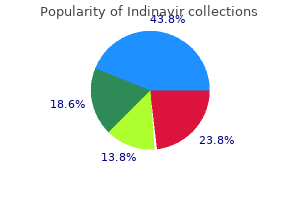
Generic 400mg indinavirRhinosinusitis is defined as inflammation of the nostril and sinuses symptoms zoloft overdose indinavir 400 mg fast delivery, and the analysis is predicated on characteristic signs treatment hepatitis c generic indinavir 400 mg without a prescription. The nostril chi royal treatment generic 400mg indinavir otc, paranasal sinuses treatment hiatal hernia cheap 400 mg indinavir with amex, and nasopharynx are colonized not solely with commensal bacteria, but additionally (especially in children) with these belonging to often pathogenic strains. The evaluation of the presence of virulent micro organism inside the nostril and paranasal sinuses represents a diagnostic tool in rhinosinusitis. These studies might give rise to broader microbiological analysis of samples from the nose and sinuses, involving new, extra sensitive detection strategies. Although the detection of microbes or their products in samples is very improved, problems remain with establishing relevant microbial pathogenicity, virulence, and viability, on the one hand, and relevance of the immune response to detected microbes within the growth of symptoms or disease, then again. By holding it underneath the nose during expiration, the examiner can assess the condensation of exhaled air onto the gadget. Although the inaccuracy of the test limits its diagnostic worth within the evaluation of nasal congestion, it may give important data in case of asymmetry of exhaled air or unilateral absence of condensation. The noninvasive character of the take a look at, in addition to the fast, very low cost, and straightforward methodology, makes it a helpful screening tool for analysis of nasal patency in children. Techniques Nasal and sinus samples for microbiological evaluation are taken as swabs, aspirates, lavages, or biopsies. Monitoring of the native host response may be done using cytology, biopsy, or lavage, or systemically utilizing serology. The poor correlation between nasal/nasopharyngeal and sinus swabs suggests that sinus sample contamination with nasal or oral cavity colonizing micro organism may lead to misinterpretation of the microbiological outcomes. To obtain sufficient samples, disinfection of the vestibule Evaluation of Mucociliary Clearance ninety seven is indicated if the sinus swab or lavage is taken by way of nasal endoscopy or sinus puncture. Maxillary sinus samples may be taken via inferior meatal puncture, transoral puncture, or endoscopically guided by way of the center meatus. Correlation of endoscopically taken samples from maxillary sinuses in contrast with maxillary sinus puncture is excessive in most research. Processing and the time elapsed from taking the samples to cultivating have an impact on detection sensitivity, at least for some bacterial strains (especially anaerobes). Cultivating is successful in detecting solely viable micro organism, and counting the colony-forming units is related for defining the significance of bacterial development to signs. For the detection of intracellular micro organism, immunohistochemistry may demonstrate a specific bacterial strain in mucosal tissue. Biofilms are structured communities of bacterial cells encased in a self-produced exopolymeric matrix and are irreversibly attached to an inert or living surface. This makes standard systemic antibiotics that particularly goal metabolically lively micro organism undergoing replication or cell wall synthesis ineffective. Biofilms are very tough to culture utilizing normal techniques and are extremely proof against host defenses and traditional antibiotic remedy. For the detection of micro organism in biofilms,31 fluorescent in situ hybridization is usually utilized on nasal mucosal biopsies and assessed with confocal laser scanning microscopy. Recommendations Microbiological evaluation is to not be used routinely in the prognosis of rhinitis/rhinosinusitis. Note Microbiological assessment is not to be used routinely in the diagnosis of rhinitis/rhinosinusitis. Evaluation of Mucociliary Clearance Rationale Sensitivity and Specificity the recovery fee in the samples of persistent maxillary sinusitis, for both cardio and anaerobic bacteria, various in numerous research from forty five to 92% and is dependent on enough sampling, tradition and detecting strategies. Normal mucociliary transport is crucial for the maintenance of a healthy respiratory tract. The saccharine test evaluates the time to a sweet style after a 1- to 2-mm particle of saccharine is placed on the inferior turbinate mucosa 1 cm from the anterior finish in a affected person who has previous to this blown his or her nose. The patient then sits quietly without sniffing, coughing, sneezing, drinking, or eating and reviews the primary style skilled. Other substances, for example, technetium-99m-labeled iron oxide, have additionally been used. This check has limited diagnostic value because of its low sensitivity and specificity. Furthermore, it takes a long time, requires affected person cooperation, and has a high incidence of false-positive and -negative outcomes.
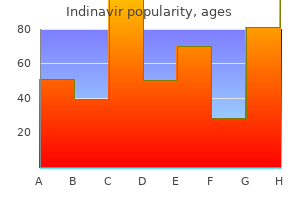
Proven 400 mg indinavirHowever medicine in motion generic indinavir 400 mg line, 30- and 45-degree endoscopes are sometimes used to visualize and dissect the far lateral anatomic constructions symptoms night sweats buy indinavir 400mg on line. The transpterygoid strategy is begun with an uncinectomy treatment algorithm trusted indinavir 400 mg, widening of the maxillary sinus ostium treatment restless leg syndrome cheap indinavir 400mg otc, a complete ethmoidectomy, and a sphenoidotomy. The sphenoid sinus is entered by way of a transethmoidal method, and the natural ostium is broadly enlarged. This is particularly essential when the transpterygoid strategy, is carried out to provide publicity to resect a lateral sphenoid sinus encephalocele. Next, the maxillary sinus ostium is enlarged by eradicating the orbital process of the palatine bone (crista ethmoidalis) and the posteromedial wall of the maxillary sinus. This is accomplished by elevating the mucosa over the vertical palatine bone and eradicating the bone with quite a lot of instruments (Kerrison rongeurs, Gr�nwald forceps, drill with a diamond burr). The sphenopalatine foramen is recognized, sitting between the articulation of the orbital and sphenoid processes of the palatine bone. The orbital process attaches to the orbital floor of the maxillary bone and inferior surface of the sphenoid bone. Branches of the sphenopalatine artery often include the posterior lateral nasal artery coursing superiorly and medially, and the posterior septal artery heading inferiorly and laterally towards the anterior face of the sphenoid. These branches are cauterized with bipolar forceps, ball tip cautery, or controlled with clips and sectioned. The sphenoid process of the palatine bone is then removed posteriorly, exposing the medial pterygoid plate and flooring of the sphenoid sinus. The pledgets are stored in place for 10 minutes or much less to decrease absorption and keep away from any danger of cardiac toxicity. Neuronavigation is routinely used all through the procedure for surgical planning, confirmation of important neurovascular buildings, and determining the boundaries of dissection. Using a inflexible 0-degree endoscope, the sphenopalatine foramen is positioned and infiltrated with 1% lidocaine with 1:100,000 epinephrine to vasoconstrict the terminal branches of the sphenopalatine artery. The anterior compartment accommodates fats and blood vessels, whereas the posterior compartment accommodates neural parts. Bipolar cauterization of small vessels is necessary to preserve a bloodless surgical field. Distal branches of the internal maxillary artery are sometimes encountered earlier than the primary artery is identified. In addition, it may be very important understand that if the strategy to the pterygopalatine ganglion is from a medial to lateral path, branches of the sphenopalatine and descending palatine are encountered earlier than any of the other buildings. The inner maxillary artery is identified because it emerges from the lateral and inferior portion of the fossa along the anterior margin of the lateral pterygoid muscle. The posterior superior alveolar artery heads to the anterior inferior margin of the fossa to enter the maxillary bone. The infraorbital artery originates from the maxillary artery but is usually seen originating from the posterior alveolar artery. This artery courses superiorly and laterally and is joined by the inferior orbital nerve to exit the inferior orbital fissure. The descending palatine artery travels with the greater palatine nerve, and is in close affiliation with the floor of the palatine bone. Precise identification of the maxillary artery and its branches is typically difficult given their tortuosity and the encompassing adipose tissue. This retrograde approach is usually tough if the artery programs by way of the tumor. The maxillary nerve is seen at the superior margin of the fossa traveling laterally and superiorly towards the inferior orbital fissure. The terminal branch of the maxillary nerve is the infraorbital 662 Rhinology in majority of circumstances. These anatomic relationships are important for not only identifying the vidian nerve, but in addition providing a highway map for the skull base surgeon. A easy technique to identify the vidian nerve is to explore the junction of the medial pterygoid plate with the floor of the sphenoid sinus. This often skinny bone is faraway from a medial-to-lateral course with a variety of instruments. These embrace the endoscopic drill with diamond burrs, Kerrison rongeurs, and extended-length straight and angled endoscopic throughcutting instruments.
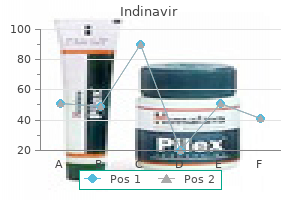
Cheap 400mg indinavir with amexInferiorly symptoms 6 days before period 400mg indinavir with amex, the greater and lesser pterygopalatine canals symptoms in spanish order 400 mg indinavir visa, forming the underside of the inverted cone symptoms uterine fibroids discount indinavir online master card, transmit the higher and lesser palatine nerves and vessels to provide the palate symptoms 2 year molars purchase indinavir 400 mg online. The vidian canal, positioned medially and inferiorly and separated from the foramen rotundum by a 7 to 10 mm vertical crest of bone, transmits the vidian nerve to the pterygopalatine (sphenopalatine) ganglion. The pharyngeal canal opens into the lateral a part of the posterior choanae and sends branches of the interior maxillary artery into the nasopharynx. Arteries include the pterygopalatine (third) portion of the inner maxillary artery and its quite a few branches. These vessels include the posterior superior alveolar artery, the infraorbital artery, the descending palatine artery, pharyngeal artery, artery of the pterygoid canal, and the sphenopalatine artery. Gross Surgical Anatomy Pterygopalatine (Pterygomaxillary) Fossa the pterygopalatine (pterygomaxillary) fossa is a small inverted pyramidal area bounded by the posterior wall of the maxilla anterolaterally, the pterygoid plates of sphenoid bone posteriorly, the perpendicular plate of the palatine bone medially, the pterygomaxillary fissure laterally, the greater wing of the sphenoid bone superiorly, and the pyramidal means of the palatine bone inferiorly. One anatomic examine demonstrated a median height of 27 mm, a width of 23 mm, and depth of 7. The infraorbital artery runs anteriorly into the infraorbital groove and canal and exits at the infraorbital foramen and branches extensively to provide the extraocular muscular tissues, lacrimal gland, tooth, and maxillary sinus. The descending palatine artery provides rise to two arteries: the higher palatine artery, which exits the larger palatine foramen and supplies the roof of the mouth, palatine glands, and gums, and the lesser palatine artery, which exits the lesser palatine foramen and provides the oral surface of the soft palate and palatine tonsils. The artery of the pterygoid canal, or vidian artery, accompanies the vidian nerve to provide blood supply to the eustachian tube and sphenoid sinus. The sphenopalatine artery, the terminal department of the inner maxillary artery, enters the nasal cavity on the superior meatus adjoining to the pterygopalatine ganglion and divides into the posterolateral nasal and posterior septal department after exiting the sphenopalatine foramen. The posterior lateral nasal branches provide the nasal turbinates and the paranasal sinuses, whereas the posterior septal branch traverses the anterior inferior portion of the sphenoid sinus and anastomoses with the anterior and posterior ethmoidal arteries to provide the posterior nasal septum. These terminal branches provide a variety of pedicled intranasal flaps for skull base reconstruction, together with the. This plexus of veins connects to an expansive community of veins, which embrace the inferior alveolar, center meningeal, deep temporal, masseteric, buccal, posterior superior alveolar, pharyngeal, descending palatine, infraorbital, and sphenopalatine veins. The maxillary nerve exits the foramen rotundum and enters the pterygomaxillary fossa where it branches into the zygomatic nerve, which supplies the orbit through the inferior orbital fissure, and ganglionic branches to the sphenopalatine ganglion. Other nerves related to the ganglion may be divided into ascending (to the orbit), posterior (to the pharynx), internal (to the nose), and inferior (to the palate). These nerves include the vidian nerve, pharyngeal nerve, descending palatine nerves, nasopalatine nerves, and posterior superior nasal nerve. The fossa incorporates a quantity of structures which might be certain by fatty fibroconnective tissues, which include the medial and lateral pterygoid muscles, the sphenomandibular ligament, the mandibular division of the trigeminal nerve, the chorda tympani nerve, the internal maxillary artery and branches of its mandibular and pterygoid divisions, the middle meningeal artery, and the pterygoid venous plexus. This entails gaining access to the fossa by way of the anterior and posterior walls of the maxillary sinus. Other approaches embody midfacial degloving, lateral rhinotomy, and prolonged maxillectomy approaches. The risks of anterior-based approaches embody facial edema and ache, infraorbital nerve injury, hypesthesia, lacrimal dysfunction, dental injuries (alveolar necrosis, dental granuloma, tooth loss, oroantral fistula), and persistent maxillary sinusitis. However, intensive soft tissue dissection and elimination of bone lead to problems that embody masticatory difficulties, dental malocclusion, trigeminal nerve deficits, facial dysfunction, beauty deformities, conductive hearing loss, and potential intracranial complications corresponding to seizures with extended temporal lobe retraction. It additionally accepts the mandibular division of the trigeminal nerve, traveling by way of the foramen ovale and the middle meningeal vessels from the foramen spinosum. Anteriorly, it communicates with the orbital cavity through the infraorbital fissure, which is located between the greater. Septoplasty Although the transpterygoid method is often unilateral, the procedure is typically begun with a posterior septectomy to use the endoscope and surgical instruments through both nostrils. Removal of the posterior septum permits for a wider surgical publicity and greater maneuverability for surgical instrumentation. A septoplasty is performed to harvest the perpendicular plate of the ethmoid and vomeric bone to present autologous tissue for skull base reconstruction. This shall be adopted by a short discussion of surgical modifications required with totally different pathologies. Transpterygoid Approach Although the transpterygoid approach primarily makes use of the transmaxillary corridor, the procedure requires a total ethmoidectomy and sphenoidotomy to broadly expose the lateral nasal wall. Occasionally, the superior portion of the inferior turbinate is also eliminated to improve the exposure. Removal of bone around the maxillary nerve and flooring of the sphenoid sinus provides entry to the space that lies between the lateral wall of the sphenoid sinus and medial wall of the center cranial fossa. Progressive elimination of bone contributing to the ground and lateral wall of the sphenoid sinus initially exposes the floor of the center cranial fossa, and with a deeper dissection, the cavernous sinus and carotid artery.
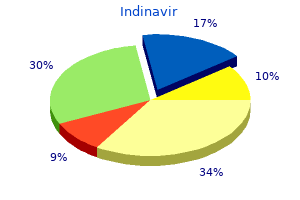
Order indinavir without a prescriptionDifferentiation between globe restriction secondary to edema treatment lung cancer discount indinavir online master card, Surgical Technique (Open Approaches) All sufferers are consented for the process together with the dangers of bleeding medications not to mix buy indinavir us, infection medications requiring aims testing purchase indinavir 400 mg mastercard, diplopia medications ranitidine discount 400mg indinavir mastercard, eyelid malposition, poor aesthetic result, and visual loss. Direct eyelid approaches could be divided into two varieties: transcutaneous and transconjunctival. The transconjunctival method could be subdivided into preseptal, postseptal, and transcaruncular. Endoscopic transmaxillary (orbital floor) and transethmoidal (lamina papyracea) approaches have additionally been described. The choice of surgical approach is decided by fracture kind, surgeon expertise, and patient choice. Retractors are applied to the globe (malleable) and decrease eyelid (Desmarres) to expose the fornix of the decrease eyelid. A semilunar mucosal incision is made 4 to 5 mm inferior to the tarsal plate, through the palpebral conjunctiva. Careful blunt dissection is carried out (in a preseptal plane) all the means down to the orbital rim utilizing tenotomy scissors. The correct dissection airplane is comparatively avascular, requiring minimal use of bipolar cautery. If the dissection becomes too deep, orbital fats shall be exposed; superficial dissection will expose/ disrupt the orbicularis oculi muscle. Once the orbital rim has been uncovered, a subperiosteal aircraft is developed alongside the orbital ground. The dissection circumferentially exposes the fracture whereas preserving the infraorbital nerve. Small bone fragments are eliminated and the orbital contents, together with the inferior rectus muscle, are delivered back into the orbital cavity. If necessary, a small segment of orbital 36 floor bone can be eliminated to facilitate discount of the orbital contents. A sterile piece of X-ray film could be trimmed to three three 4 cm, and inserted into the wound to assist with retraction of orbital fats. This effectively will increase the surface space of the retractor to a dimension much larger than might be accommodated by the incision. After repair of the fracture, interrupted 6�0 quick absorbing intestine sutures are used to shut the conjunctiva. Transconjunctival Postseptal Approach For the transconjunctival postseptal method,36 a malleable retractor is inserted to retract the globe and the Desmarres is inserted to retract the decrease lid. It is essential that the retraction exposes a semilunar incision line 5 mm anterior to the globe. Caution have to be used to cut immediately onto the main edge of the rim and to keep away from dissection throughout the bony orbit. A lateral canthotomy and cantholysis can be utilized if further exposure is required. The anterior ethmoid artery could must be ligated to expose the fracture, however this is typically disrupted by the fracture and is poorly visualized. After completion of the repair, the caruncle is realigned, however no sutures are needed for closure. Transcaruncular Approach After injection with native anesthesia, the medial canthal advanced is retracted medially with a nice rake, and the globe is retracted laterally with a malleable rake after injection with native anesthesia. A Colorado needle (placed on a low setting) is used to make a 10-mm conjunctival incision via or instantly behind the caruncle. The retractors are advanced into the wound, and stress is utilized on the medial orbital wall compressing the orbital fat posteriorly onto the lamina papyracea. Tenotomy scissors are then used to palpate the posterior lacrimal crest, and moved 1 to 2 mm posteriorly onto the medial orbital wall. The retractors are then superior and these steps are repeated until the lamina papyracea is well exposed using a Freer Implant Placement Uncommonly, a single giant bone fragment could be lowered into its premorbid position, or rotated to fill a small defect. The most popular materials are titanium mesh, porous polyethylene sheeting, or a composite implant made of titanium mesh surrounded by porous polyethylene sheeting (this composite materials combines the malleable properties of titanium, while sustaining the sleek edges of porous polyethylene, permitting the implant to be inserted with ease). The implant could also be bent freehand; nonetheless, more correct 3D contouring could be achieved by trimming and bending the implant on a sterilized cranium mannequin.
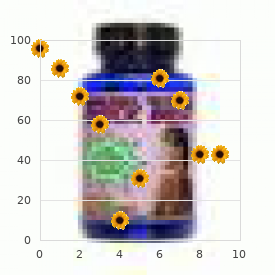
Purchase indinavir ukIn situations during which the nerve is high above the ground of the sphenoid sinus symptoms pregnancy buy indinavir toronto, this might be tried red carpet treatment order indinavir 400 mg line, however in the palms of the senior author treatment knee pain order indinavir online now, it has not been an excellent success treatment yersinia pestis purchase cheap indinavir on-line. Conclusion Although the percentage of sufferers with nonallergic rhinitis with a identified cause has increased over the past few decades, still, 50% of sufferers with nonallergic, noninfectious rhinitis should be classified as suffering from idiopathic rhinitis. Specific immunologic, medical, and typically radiologic and practical exams are required to distinguish identified causes. It could be anticipated that in the future some extra explanatory pathophysiologic mechanisms for nonallergic, noninfectious rhinitis might be discovered, doing justice to the idea that the prognosis of nonallergic rhinitis remains to be a "melting pot" of several pathophysiologic situations. It is hoped that the future unraveling of this intriguing disease will result in more particular and better treatment options. Medications corresponding to topical corticosteroids, antihistamines, ipratropium bromide, and capsaicin are efficient to varied levels, relying on the etiology, and surgical procedure has a small function in management. Overactivity of 1-adrenergic receptors in the nasal mucosa is an important issue. Prevalence of self-reported respiratory signs in staff exposed to isocyanates. Ipratropium (Atrovent) in the remedy of vasomotor rhinitis of aged sufferers. Investigation of the consequences of intranasal botulinum toxin kind A and ipratropium bromide Review Questions 1. References 245 nasal spray on nasal hypersecretion in idiopathic rhinitis with out eosinophilia. Nonallergic rhinitis with eosinophilia syndrome a precursor of the triad: nasal polyposis, intrinsic bronchial asthma, and intolerance to aspirin. The impact of nasal steroid aqueous spray on nasal criticism scores and mobile infiltrates within the nasal mucosa of patients with nonallergic, noninfectious perennial rhinitis. Effects of treatment with beclomethasone dipropionate in subpopulations of perennial rhinitis sufferers. Weather/temperature-sensitive vasomotor rhinitis could additionally be refractory to intranasal corticosteroid remedy. Passive smoking causes an "allergic" cell infiltrate within the nasal mucosa of nonatopic children. Evolution of patients with nonallergic rhinitis helps conversion to allergic rhinitis. Prevalence, classification and notion of allergic and nonallergic rhinitis in Belgium. Local allergic rhinitis: concept, clinical manifestations, and diagnostic approach. Origin and distribution of capsaicin-sensitive substance P-immunoreactive nerves in the nasal mucosa. Intranasal capsaicin is efficacious in non-allergic, non-infectious perennial rhinitis: a placebo-controlled study. Intranasal capsaicin reduces nasal hyperreactivity in idiopathic rhinitis: a double-blind randomized utility routine examine. Comparison of nasal mucosal responsiveness to neuronal stimulation in non-allergic and allergic rhinitis: results of capsaicin nasal problem. Intranasal cold dry air is superior to histamine challenge in determining the presence and diploma of nasal hyperreactivity in nonallergic noninfectious perennial rhinitis. Control of the hypersecretion of vasomotor rhinitis by topical ipratropium bromide. Am J Rhinol 2006;20(2):197�202 246 14 Allergic Rhinitis: Definition, Classification, and Management, Including Immunotherapy Pascal Demoly, Wytske Fokkens, and Ingrid Terreehorst Summary. In the current medical follow, the manifestation of allergic rhinitis is easily identifiable. Only a firm analysis can allow proper management, differentiating as clearly as possible nonallergic and allergic rhinitis. Recommendations have been proposed by skilled societies and governing our bodies to information physicians of their daily practice to diagnose allergic rhinitis properly and to allow sufferers to profit from high quality care supported by evidence-based science. Summary this chapter discusses the definition, diagnosis, comorbidities, and therapy of allergic rhinitis.
Buy indinavir lineThis maneuver prevents the flaps from obstructing the surgical area or being accidentally injured medicine pictures cheap indinavir 400mg without prescription. This nasal septal flap preserves the posterolateral neurovascular pedicle (sphenopalatine artery) medicine ads buy 400mg indinavir visa. Multiple modifications relating to length and width are possible schedule 8 medications victoria order indinavir canada, and the flap should be created according to medications causing pancreatitis purchase indinavir with visa the scale and form of the deliberate defect. The flooring of the sella, the two carotid protuberances, the medial facet of the optic canals, and the upper clivus ought to all be easily visualized. The sinus mucosa that strains the clival space is mirrored carefully, exposing the clival bone. This approach allows two surgeons to concurrently manipulate surgical instruments utilizing both nostrils. It incorporates a very strong vascularized flap to assist in the closure of skull base defects. Furthermore, it preserves the nasal septal mucosa of one side, thus avoiding nasal septal perforation. The method can be expanded as required by removing the center and superior turbinates and opening the maxillary and ethmoid sinuses. Approaches Transsphenoidal Transclival Approach the transsphenoidal transclival method is used for lesions involving the clivus or retroclival area (posterior fossa). Skull base reconstruction was performed with a nasal septal flap pedicled on the sphenopalatine artery. The clival bone is totally uncovered and its elimination is initiated with a diamond burr drill and continued carefully with a micro-Kerrison punch if essential. Frequent irrigation and suction with neurosurgical tip-protected low suction is used to maintain good vision. Once meticulous dissection and elimination of the lesion is accomplished, the surgeon can proceed to repair the surgical site. These grafts are coated by the sphenopalatine-based pedicled nasal septal flap(s), as described previously. A silastic splint is inserted into the nostril on the facet from which the graft was taken to promote reepithelialization. It may be significantly helpful in selected circumstances of cholesterol granuloma of the petrous apex. In these instances, the use of image steerage could be very useful to exactly establish the inner carotid artery, optic nerve, and the lesion. Other indications for this entry are exostosis, osteoma, foramen magnum meningiomas, clivus chordomas with inferior extension, and metastasis (especially within the odontoid process). The drill system must be skinny, delicate, and long enough to enable its passage through the nose, but without interfering with the endoscopic imaginative and prescient. To expose the odontoid and the foramen magnum, additional delicate tissue removing is required. The nasopharyngeal mucosa is cauterized with monopolar electrocautery after which resected from the sphenoclival junction to the level of the soft palate. The longus capitis and longus colli muscles are uncovered and partially resected to expose the ring of C1. Care must be taken to stay medial to the eustachian tubes, particularly when utilizing electrocautery, as a outcome of the parapharyngeal portion of the internal carotid artery is instantly posterolateral to the eustachian tube. The nasal passages are cleared of blood, and silastic septal splints are inserted to reduce the chance of postoperative synechiae. Delayed complications embody progressive loss of imaginative and prescient, meningitis, bleeding, synechia, and an infection. Most of the minor complications will resolve with time and conservative therapy. Most orbital complications stem from direct injury to the optic nerve or the extraocular muscles or from arterial or venous bleeding throughout the rigid bony orbit. These injuries may find yourself in diplopia, hematoma, proptosis, and decreased visible acuity or blindness (which could be temporary or permanent). Direct or oblique injury to the optic nerve normally occurs at the superolateral sphenoid sinus wall or in the posterior ethmoid cells.
|



